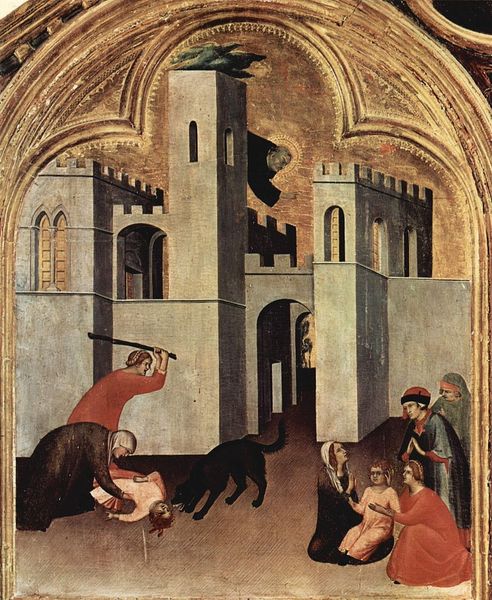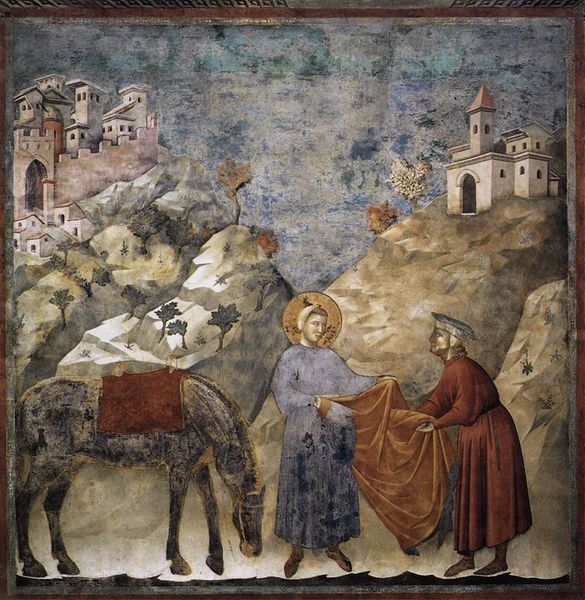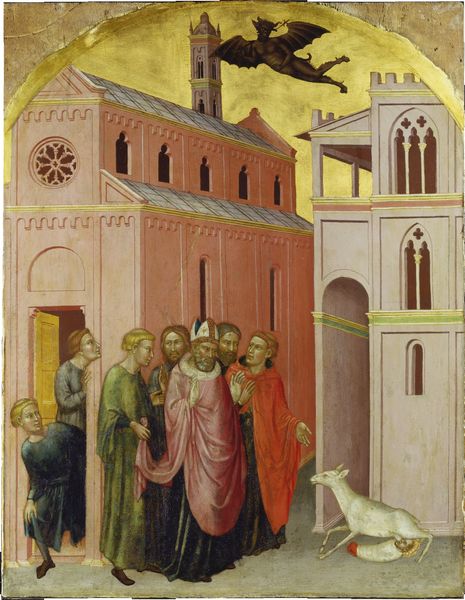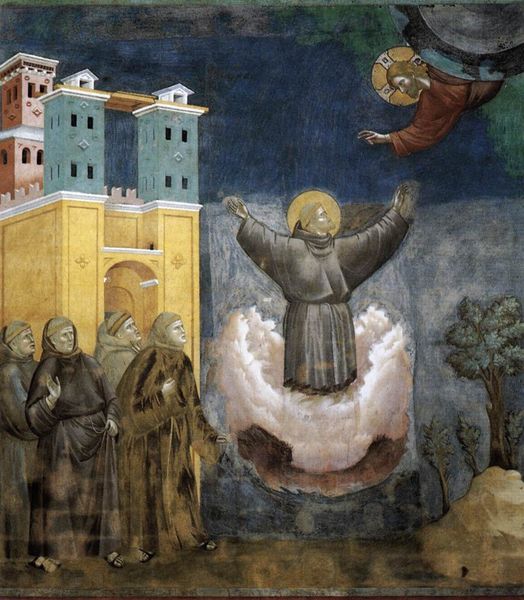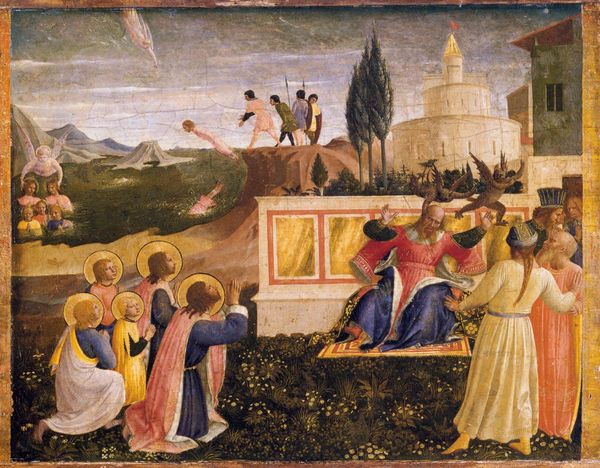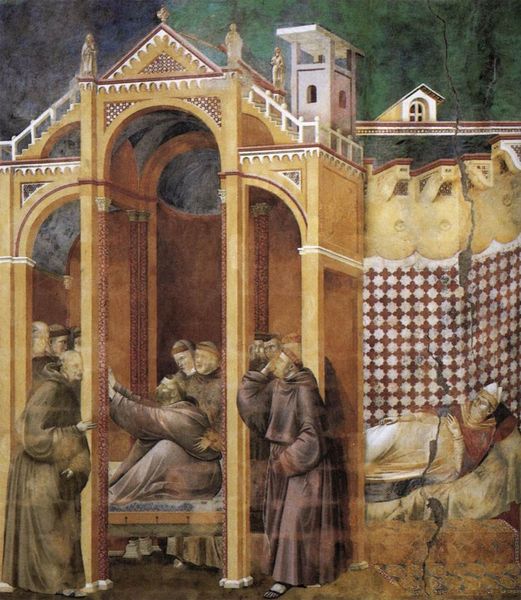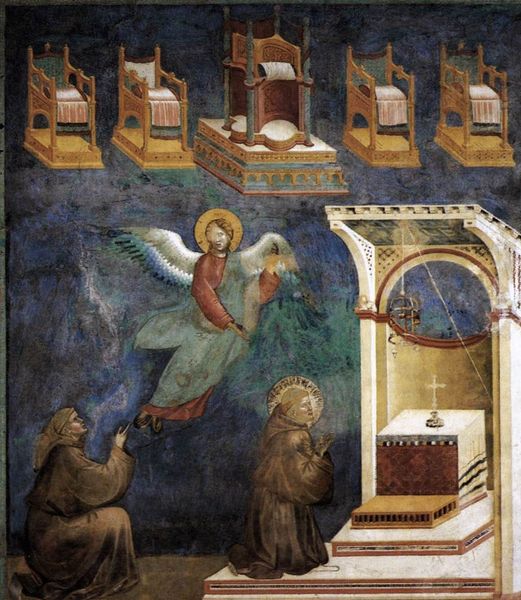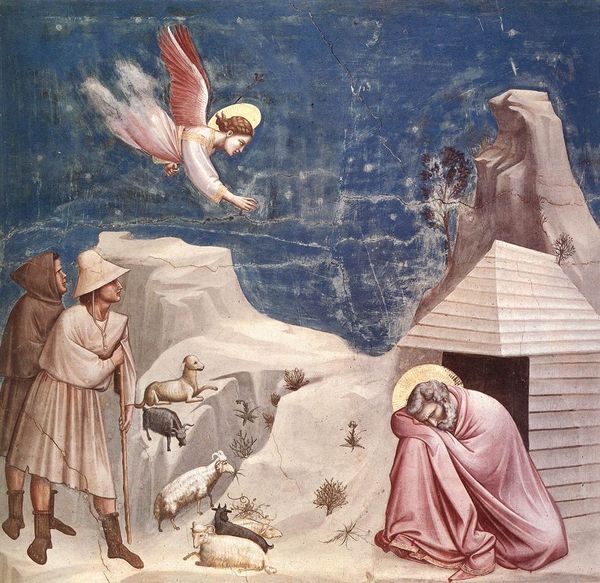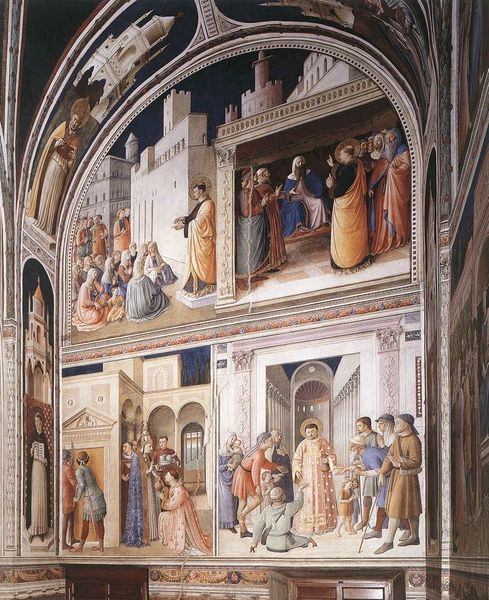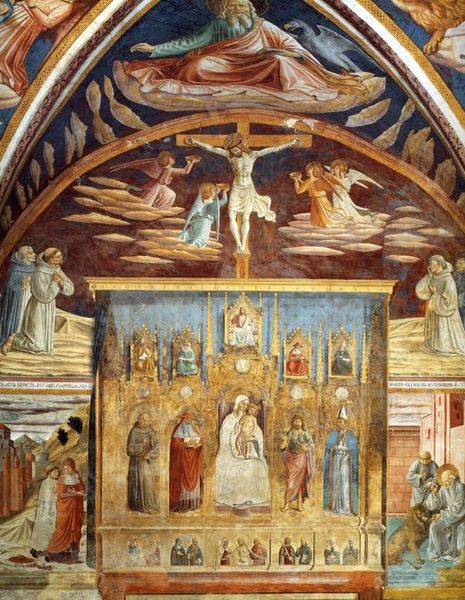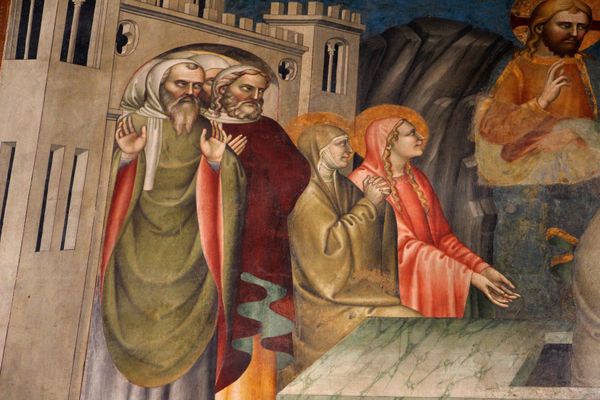
painting, fresco
#
medieval
#
narrative-art
#
painting
#
gothic
#
painted
#
figuration
#
fresco
#
christianity
#
mythology
#
history-painting
#
italian-renaissance
#
christ
Dimensions: 270 x 230 cm
Copyright: Public domain
Editor: This is "Vision of the Flaming Chariot," a fresco painted around 1299 by Giotto in the Basilica of Saint Francis of Assisi. It depicts what looks like a saint ascending to heaven in a fiery chariot, while monks observe from below, some appearing locked in cells. The contrast between the vibrant chariot and the somber scene below is quite striking. How do you interpret this work in its historical and social context? Curator: Well, let’s consider the Basilica itself. This wasn't just a church, but a powerful symbol of the Franciscan order, built to promote their ideals after a period of internal struggle. Giotto's frescos served as visual sermons, aimed at conveying the values of the Franciscans to a largely illiterate audience. The 'flaming chariot' alludes to stories of miraculous ascensions, legitimizing religious authority. The architectural framework looks oddly similar to prisons; do you notice what is framed inside each "cell"? Editor: Yes, it looks as though figures are indeed trapped or confined within these vertical shafts. I’m noticing the people outside these compartments seem to be more mobile. Curator: Exactly. Given the Franciscans' emphasis on poverty and obedience, one interpretation could be that those "trapped" represent those still bound by earthly desires, while the ascending figure exemplifies spiritual liberation. This resonates with the Church's efforts during the medieval period to visually reinforce its doctrine and its influence in society. Editor: So, this fresco does more than just depict a miracle; it’s a visual representation of the Franciscan ideology and a promotion of the Church’s institutional power? Curator: Precisely! And it reveals a lot about how art functioned as a tool for shaping beliefs and controlling social behavior within religious contexts. The flaming chariot is less a literal event and more a strategic icon deployed within a broader cultural narrative. Editor: That's a really insightful way to look at it. It shifts my perspective from simply admiring the art to understanding its role in a larger social and political landscape. Curator: And hopefully, it opens a path for thinking about how those types of forces continue to work today, shaping art's meaning, accessibility, and purpose.
Comments
No comments
Be the first to comment and join the conversation on the ultimate creative platform.
